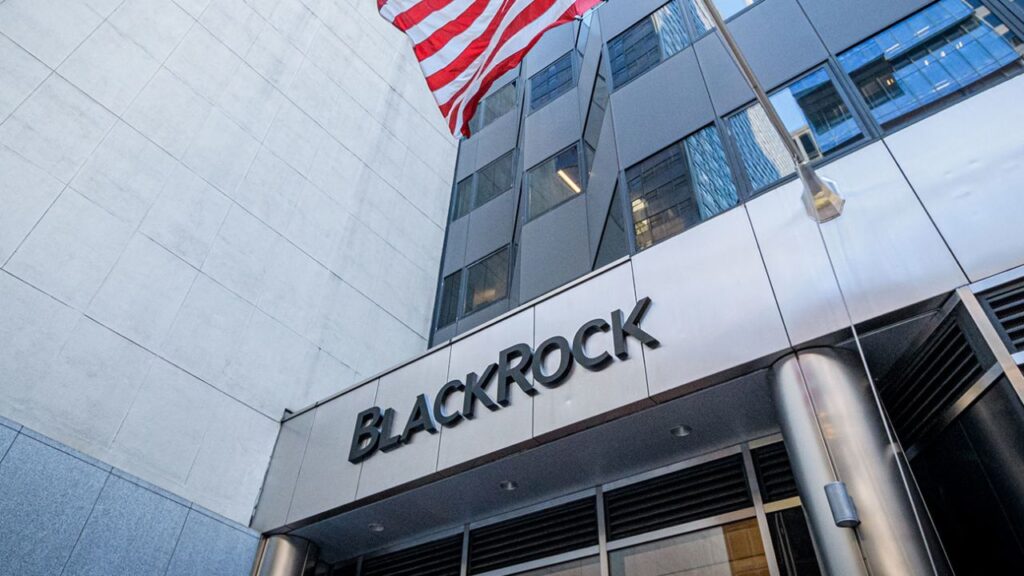Swiss asset manager Pando Asset has thrown its hat into the competitive ring of the spot Bitcoin exchange-traded fund (ETF) race in the United States, surprising many with its unexpected entry.
On the same day, investment giant BlackRock engaged in discussions with the country’s securities regulator, presenting an updated ETF model based on the regulator’s feedback.
On November 29, Pando Asset submitted a Form S-1 to the U.S. Securities and Exchange Commission (SEC), the document used to register securities with the agency, outlining its Pando Asset Spot Bitcoin Trust.
Similar to other ETF proposals, this trust intends to mirror Bitcoin’s price movements, with Coinbase’s custody arm responsible for safeguarding Bitcoin holdings on behalf of the trust.
Pando Asset joins a crowded field, becoming the 13th applicant seeking approval for a spot Bitcoin ETF in the U.S., competing with heavyweights like BlackRock, ARK Invest, and Grayscale.
READ MORE: Bitcoin Holds Strong at $38,000 Amid Speculation of Price Surges and Fed’s Powell Speech
In a November 29 post on X (formerly Twitter), Bloomberg ETF analyst Eric Balchunas expressed curiosity about Pando’s late filing, wondering why it emerged at this stage.
He also raised concerns about the potential implications if Pando’s ETF were to be approved alongside others on January 10, a date he and fellow Bloomberg ETF analyst James Seyffart have earmarked as a possible approval date.
This date coincides with the SEC’s deadline to either approve or deny ARK Invest’s application.
Seyffart, however, expressed doubts about Pando’s readiness to launch its ETF on the same day as others, acknowledging that unforeseen developments can occur in this space.
Meanwhile, the SEC held meetings with executives from BlackRock and Invesco on November 28 to discuss their respective ETF proposals, as revealed in agency documents.
BlackRock presented revisions to its redemption model, addressing concerns raised during a prior meeting regarding the impact on balance sheets and the risks faced by U.S. broker-dealers dealing with offshore crypto entities.
Balchunas clarified that BlackRock’s revised approach involves offshore entities acquiring Bitcoin from Coinbase and pre-paying U.S. registered broker-dealers in cash, as these broker-dealers cannot directly handle Bitcoin.
This strategy aligns with the SEC’s requirement for ETFs to have redemption models that place the responsibility on issuers to transact in Bitcoin, avoiding the need for broker-dealers to engage with unregistered subsidiaries or third-party firms for Bitcoin transactions.
Standard Chartered has made a bold prediction that Bitcoin could surge to $100,000 within the next year, driven by the potential launch of exchange-traded funds (ETFs) sooner than expected.
In a research note released on November 28, the banking giant reaffirmed its optimistic price targets for Bitcoin.
The report suggests that Bitcoin may reach a six-figure price tag by the end of 2024, a significant jump from its current trading value of $37,700.
This bullish outlook is primarily based on the possible approval of Bitcoin spot price ETFs in the United States.
Geoff Kenrick, Head of EM FX Research, West, and Crypto Research at Standard Chartered, stated, “We now expect more price upside to materialize before the halving than we previously did, specifically via the earlier-than-expected introduction of US spot ETFs.”
This development raises the prospect of Bitcoin reaching the $100,000 mark before the end of 2024.
Standard Chartered’s positive stance on Bitcoin’s future performance builds upon its earlier optimistic outlook.
READ MORE: Bitcoin Holds Strong at $38,000 Amid Speculation of Price Surges and Fed’s Powell Speech
In July, the bank pointed to the decreasing availability of Bitcoin supply as a factor that could drive prices significantly higher. At that time, Kenrick predicted that Bitcoin could hit $50,000 by the end of 2023.
Additionally, he noted that miners might start hoarding more of their Bitcoin stocks due to an increasing hash rate and the upcoming block subsidy halving, which will reduce the amount of Bitcoin earned per block by 50%.
This increased profitability for miners would lead to reduced net Bitcoin supply, pushing prices even higher.
The spotlight is currently on the ETF narrative, with derivatives premiums rising and growing anticipation of a potential ETF approval in January.
Bitcoin’s price trajectory has been highly responsive to news related to ETFs, with rapid gains in November as investors anticipated regulatory approval before the January window.
However, there are concerns about large-volume investors selling off their holdings once the green light is given, potentially leading to a “buy the rumor, sell the news” scenario.
This situation could result in losses for latecomers to the market. Nonetheless, Standard Chartered remains confident in Bitcoin’s ability to reach new price milestones, especially if ETFs become a reality sooner than expected.
On November 29, Bitcoin (BTC) demonstrated resilience by maintaining its momentum at the $38,000 level, despite warnings of potential market corrections.
Bitcoin’s price trajectory continued to target new 18-month highs, as reported by data from Cointelegraph Markets Pro and TradingView.
It had previously reached highs matching those of the previous day, even surpassing $39,000 in futures markets.
The enthusiasm surrounding Bitcoin derivatives had led to debates about the possibility of large-volume traders leaving late long positions vulnerable at these elevated levels. Keith Alan, co-founder of monitoring resource Material Indicators, issued a word of caution to traders regarding what he referred to as “whale games.”
He highlighted an instance where liquidity at $38,000 was pulled to trigger a move to $38,500, emphasizing that it wasn’t necessarily a friendly gesture but rather a strategic move by large players.
Looking ahead, attention was focused on the words expected from Jerome Powell, the chair of the United States Federal Reserve, scheduled for December 1.
READ MORE: Spain Implements New Crypto Reporting Requirement for Residents Holding Assets Abroad
Powell’s statements could potentially serve as an external catalyst for Bitcoin’s price, with the possibility of it surpassing the $40,000 mark.
However, it was noted that whales (large cryptocurrency holders) would likely be closely monitoring a key level at which to sell off their holdings.
A chart accompanying the article revealed that the sell-side liquidity in the order book was concentrated at $38,500, a level that had not been challenged at the time of writing.
Despite these considerations, some remained optimistic about the possibility of further short-term upside, suggesting that increased trading volume was all that was needed for a breakout toward the $40,000 threshold.
In the broader financial context, Bill Ackman, CEO and founder of hedge fund Pershing Square Capital Management, expressed his belief that the Federal Reserve might have to make a pivot on interest rates as early as the first quarter of 2024.
Ackman argued that failing to cut rates soon would increase the risk of a “hard landing” for the U.S. economy as inflation subsided.
Key U.S. macroeconomic data, including the Q3 GDP and the October print of the Personal Consumption Expenditures Index, were expected to play a role in shaping Fed policy decisions.
It’s important to note that the article does not provide investment advice and emphasizes the need for individuals to conduct their own research when making investment decisions.
Bitcoin deposits and withdrawals have been reinstated on HTX, the cryptocurrency exchange previously known as Huobi, following a devastating $30 million security breach that occurred on November 22.
In an official blog post dated November 26, HTX announced the resumption of deposit and withdrawal services for several cryptocurrencies, including Bitcoin (BTC), Ethereum (Ether), Tron, and Tether (USDT).
Justin Sun, the prominent figure associated with HTX, shared a subsequent update on X (formerly Twitter), revealing HTX’s intention to progressively restore functionality for the remaining cryptocurrencies. Sun expressed optimism that this process would be completed “by next week.”
The recent security incident marked the fourth hack in just two months to afflict crypto platforms linked to or controlled by Justin Sun.
HTX’s exchange hot wallets suffered a massive $30 million loss during this latest breach.
Additionally, on the same fateful day, the HTX Eco Chain bridge, involving HTX, Tron, and BitTorrent, all entities associated with Sun, fell victim to an $86.6 million cyberattack.
Another Sun-owned cryptocurrency exchange, Poloniex, faced its own ordeal when it experienced a $100 million attack on November 10.
Blockchain security firm CertiK indicated that this incident likely resulted from a compromise of private keys.
The series of security breaches dates back to September 24, shortly after the rebranding of Huobi to HTX.
During this earlier attack, an assailant made off with nearly $8 million worth of cryptocurrencies from the exchange’s hot wallet.
These security breaches have raised significant concerns within the cryptocurrency community, highlighting the vulnerability of platforms and the pressing need for robust security measures in the ever-evolving landscape of digital assets.
HTX’s efforts to restore services and enhance security are a crucial step in regaining trust and stability for its users and the broader cryptocurrency market.
With the approval of the first spot Bitcoin exchange-traded fund (ETF) in the United States, Bitcoin may be on a path towards reaching nearly $50,000, according to insights from CryptoCon, a prominent analyst.
The Ichimoku Cloud indicator, a tool that combines historical, current, and future trading signals, is signaling an upward trajectory for Bitcoin’s price.
Analyzing Bitcoin’s weekly timeframe, the Ichimoku Cloud indicator suggests that the recent gains in BTC price are just the beginning of a potential bullish trend.
CryptoCon shared his insights on November 27, predicting a specific target for Bitcoin’s price.
The Ichimoku indicator’s leading spans have recently intersected, forming a new upward cloud.
Furthermore, the lagging span, known as Chikou, has broken through resistance levels, indicating that the price is poised to move higher.
CryptoCon noted that the previous prediction made by the Weekly Ichimoku cloud accurately anticipated Bitcoin’s rise to $38,000 two months in advance, and now it points towards a new target of $43,000.
This projection typically takes around 7 to 11 weeks from the cross, with an average of 10 weeks, implying that the price could reach this level in early January.
READ MORE: Circle and SBI Holdings Forge Strategic Alliance to Boost USDC and Web3 Adoption
CryptoCon also suggested that $43,200 is a conservative estimate, and Bitcoin could potentially reach as high as $48,000.
He emphasized that the Ichimoku indicator, which looks into the future, indicates that there is more room for growth.
As of November 28, Bitcoin was trading at $37,000. The timing of the potential $48,000 target aligns with the expected approval date of the Bitcoin ETF in early January, assuming historical market patterns continue to hold.
However, the specifics of the ETF approval and which products will receive the green light remain uncertain.
Meanwhile, the U.S. Securities and Exchange Commission (SEC) continues to exert influence on the cryptocurrency market by taking enforcement actions against Binance, the world’s largest exchange.
Binance faced a significant $4.3 billion fine, and its CEO, Changpeng Zhao, was removed from his position. Interestingly, these developments have benefited Coinbase, a rival exchange, with its shares surging over 250% year-to-date.
In conclusion, Bitcoin’s potential ascent to nearly $50,000 is supported by the Ichimoku Cloud indicator’s signals, and its timing coincides with the anticipated approval of the first U.S.
Bitcoin ETF in early January, although regulatory uncertainties persist in the crypto space.
Robert Kiyosaki, renowned author of the influential personal finance book “Rich Dad Poor Dad,” has reaffirmed his belief in the importance of assets like Bitcoin, gold, and silver as the specter of inflation looms large, endangering global living standards.
In recent times, the price of gold has surged past the $2,000 per ounce mark, demonstrating a consistent rebound in the face of diminishing fiat currency values.
As a staunch advocate for the Bitcoin ecosystem, Kiyosaki used his platform, with over 2.4 million followers on X (formerly Twitter), to encourage people to reduce their exposure to fiat currencies, which he dismissively referred to as the “fake money system.”
Kiyosaki, known for his candid and often unconventional financial advice, declared that individuals attempting to save money through traditional means are destined to fall short.
Instead, he recommended alternative forms of investment, including gold, silver, and Bitcoin, asserting, “Don’t be a loser. Get out of the FAKE money system.
Get into gold, silver, Bitcoin now… Before it’s too late.”
READ MORE: Zipmex Halts Digital Asset Trading in Thailand to Comply with Regulatory Requirements
On November 23rd, Kiyosaki pointed the finger at what he termed the “woke government” for the mounting inflation and the ensuing daily struggles faced by ordinary citizens.
He remains resolute in his choice to convert his fiat assets into Bitcoin and precious metals, underscoring his belief that political leaders are indifferent to the well-being of the populace, ultimately leading to conditions of strife and impoverishment.
As early as October 20th, Kiyosaki had forecasted that the price of gold would soon surpass $2,100, and he anticipates a further rally to $3,700 in the not-so-distant future.
In a bold prediction made in August 2023, Kiyosaki foresaw Bitcoin’s value reaching $100,000, taking into account the geopolitical tensions that posed a threat to global prosperity.
However, he also painted a vivid picture of what might transpire should the stocks and bonds market plummet.
In such a scenario, Kiyosaki envisions Bitcoin’s price skyrocketing to an astonishing $1 million, while the value of gold and silver would surge to $75,000 and $65,000, respectively.
In a world grappling with economic uncertainties and growing inflationary pressures, Kiyosaki’s unorthodox investment advice continues to capture the attention of individuals seeking to safeguard their financial futures.
Bitcoin is embarking on a new week, maintaining its position near its highest levels in the past 18 months.
The cryptocurrency’s price action surged above $38,000 last week, but it has since been trapped within a “micro-range,” leaving traders uncertain about the next move.
The pressing question on everyone’s mind is whether a deeper retracement is in store or if Bitcoin will continue its ascent to reach $40,000, potentially leaving doubters behind.
In the coming days, several potential catalysts could determine the direction of Bitcoin’s trend, and there are indications that the market is primed for a boost.
Volatility is expected to increase with the monthly close on the horizon, but before that, a series of macroeconomic events could bring unexpected price action.
The monthly close holds significant importance for day traders, with Bitcoin currently at a critical juncture.
Untested liquidity levels on the downside and resistance around the $40,000 mark have created a stubborn daily trading range.
Bulls and bears have struggled to break free from this narrow corridor, with even new higher highs being short-lived.
As of the latest weekly close, Bitcoin experienced a brief drop to $37,100 before recovering.
READ MORE: California Governor Advocates GenAI Education to Secure the State’s Economic Future
Traders are now eagerly awaiting bid momentum to return, with key levels at $37,000 and $38,000 to watch closely.
The monthly close approaches, and Bitcoin has seen a 7.8% increase month-to-date in November 2023, which is considered average compared to previous years.
In addition to the monthly close, Bitcoin traders are also anticipating a week filled with macroeconomic events.
The United States Federal Reserve will receive crucial inflation data that will influence its interest rate policy decisions in the coming month.
Fed Chair Jerome Powell is set to speak on December 1, following comments from other senior Fed officials.
The GBTC (Grayscale Bitcoin Trust) is nearing parity with its underlying asset pair, BTC/USD, indicating a positive shift in market sentiment.
The fund’s resurgence is seen as a sign of growing institutional interest in Bitcoin, particularly if the U.S. approves its first spot price exchange-traded fund (ETF).
Bitcoin miners are deploying record processing power to the network in anticipation of the upcoming block subsidy halving in April 2024.
The hash rate, a measure of this deployment, recently surpassed 500 exahashes per second, a significant milestone.
Meanwhile, BTC exchange balances are declining once again, with major exchanges holding the lowest amount of BTC since April 2018, driven in part by recent regulatory actions and hacks affecting some exchanges.
Christine Lagarde, the president of the European Central Bank (ECB) and a well-known critic of Bitcoin and other cryptocurrencies, recently revealed a personal anecdote about her son’s unsuccessful foray into the world of digital assets.
During a town hall meeting in Frankfurt on November 24, Lagarde disclosed that her son had suffered substantial losses from his cryptocurrency investments, despite her repeated warnings.
Lagarde recounted, with a touch of wry humor, that her son had “ignored me royally, which is his privilege,” and as a result, he ended up losing “almost all the money he had invested” in cryptocurrencies.
Although Lagarde did not specify the exact amount her son lost, she noted that he regarded it as “not a lot,” estimating that he had lost approximately 60% of his crypto investments.
Lagarde later revealed that her son reluctantly acknowledged her cautionary advice after this substantial loss.
The ECB president’s sentiments toward cryptocurrencies have been quite clear.
READ MORE: Montenegro Court Approves Extradition of Terraform Labs Co-Founder Do Kwon
She expressed her skepticism about the value of cryptocurrencies in 2022, stating that they are essentially “worth nothing” as they lack tangible backing.
In 2021, Lagarde also predicted that central banks worldwide would not be adding Bitcoin to their reserves anytime soon, reflecting her cautious stance toward digital assets.
In contrast to her criticism of cryptocurrencies, Lagarde has shown strong support for the concept of central bank digital currencies (CBDCs).
In April 2023, she admitted that a potential digital euro would have a “limited” scope, primarily intended for facilitating day-to-day payments.
This stance aligns with the ECB’s ongoing exploration of the feasibility and implications of launching a digital euro.
Overall, Lagarde’s personal account of her son’s crypto investment misadventures provides a glimpse into her deep-seated skepticism toward cryptocurrencies.
She firmly believes that while individuals have the freedom to invest and speculate as they choose, there should be stringent measures to prevent participation in illicit or criminal activities within the crypto space, reflecting her ongoing commitment to financial stability and regulation.
Bitcoin remained steady at around $38,000 as the week came to a close on November 26, bolstering the confidence of traders in the cryptocurrency’s price prospects.
Throughout the weekend, Bitcoin displayed its characteristic stability, with notable price fluctuations yet to materialize.
In recent days, Bitcoin had reached new heights not seen in 18 months, signaling positive indications for a potential upward trajectory.
Prominent trader and analyst Credible Crypto was among those who observed buyers effectively absorbing any selling pressure near the local price peaks.
With open interest in derivative markets staying relatively low and consistent demand for Bitcoin in the spot market, conditions appeared ripe for a potential upward movement.
Credible Crypto noted the potential for shallow dips in Bitcoin’s price due to the lack of open interest capable of triggering liquidation events, coupled with the evident demand at these price levels.
READ MORE: Montenegro Court Approves Extradition of Terraform Labs Co-Founder Do Kwon
Credible Crypto even suggested that his earlier prediction of a return to $36,900, a mere 2.1% drop from the current spot price, might not materialize as anticipated.
Another market analyst, Titan of Crypto, expressed optimism about Bitcoin’s immediate future. Using the Ichimoku Cloud indicator, Titan of Crypto identified a notable breakout in its key components, a rare occurrence in Bitcoin’s weekly chart.
The lagging span of Ichimoku, known as Chikou, which measures data from 26 weeks prior, was positioned above the price and at the top of the Kumo Cloud.
Furthermore, both Tenkan-sen and Kijun-sen exhibited a renewed uptrend, painting a highly promising picture for Bitcoin’s potential upward trajectory, according to Titan of Crypto.
Commenting on the price action, Titan of Crypto pointed out that recent weekly candles indicated resistance from bullish forces, as evidenced by the candle wicks pushing back against potential downward movement.
Overall, Bitcoin’s stability around the $38,000 mark, coupled with positive sentiment from prominent traders and analysts, suggested that the cryptocurrency market was poised for potential upward movement in the near future.
However, the actual direction of Bitcoin’s price remained dependent on factors such as market demand and open interest in derivative markets.
BitMEX co-founder Arthur Hayes has expressed his bullish stance on Bitcoin, offering insights on the cryptocurrency’s potential trajectory.
In a recent post, accompanied by a chart illustrating net reverse repurchase agreement (RRP) and treasury general account (TGA) balance changes, Hayes humorously referred to United States Treasury Secretary Janet Yellen as “Bad Gurl Yellen.”
Hayes urged fellow Bitcoin enthusiasts to maintain their focus, citing a notable increase in U.S. dollar liquidity.
He posited that Bitcoin’s price is likely to mirror the rise in dollar liquidity, potentially leading to an uptick in its value.
The provided chart showcases fluctuations in RRP and TGA balances, hinting at a potential correlation between heightened dollar liquidity and Bitcoin’s price.
In a parallel development, crypto analyst dharmafi offered more precise data points.
The post highlighted an RRP of $65 billion and a TGA balance of $35 billion, resulting in a substantial net liquidity surge of $106 billion since November 21.
As Hayes pointed out, this surge in liquidity reflects shifting dynamics within financial markets. Investors and Bitcoin enthusiasts closely monitoring these liquidity injections are anticipating potential repercussions for the cryptocurrency market.
READ MORE: Hong Kong’s Hospital Authority Harnesses AI to Tackle Rising Superbug Threat
While Hayes emphasized the connection between dollar liquidity and Bitcoin’s price movement, dharmafi’s data further underscores the impact of the liquidity surge.
The substantial increase in net liquidity since November 21 has raised questions regarding its potential effects on various asset classes, including cryptocurrencies.
In contrast to the enthusiasm expressed by Hayes and others in the crypto space, Janet Yellen, who has been a vocal skeptic of Bitcoin, recently issued a caution to cryptocurrency exchanges.
During a meeting of G20 finance ministers and central bank governors, Yellen emphasized the importance of compliance within the digital currency industry.
She underlined the necessity for cryptocurrency exchanges to adhere to regulations to operate within the U.S. financial system, reinforcing her commitment to maintaining regulatory oversight in the crypto sector.
This stance by Yellen reflects ongoing discussions and debates surrounding the regulatory framework for cryptocurrencies in the United States.










